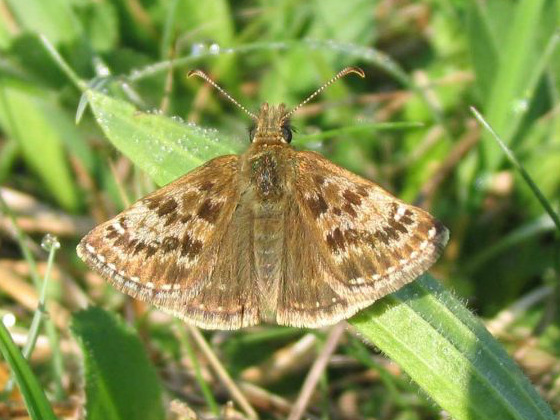
Restricted rare resident

Distribution and Status
It appears that loss of habitat since recording began in 1980 mostly due to farming improvements has led to many colonies being lost although populations have increased since 2005. Presently, the best colonies are at Hexton Chalk Pit, Aldbury Nowers and Bovingdon Brickworks. There was a notable comeback at Shrubhill Common in 2022 after no reports in 2021.
Habitat Requirements
A wide range of habitats suit this butterfly including grassland, railway banks, roadside verges and woodland rides where its main larval foodplant Common Bird's-foot Trefoil Lotus corniculatus grows.
Larval Foodplants
Common Bird's-foot Trefoil Lotus corniculatus. [Greater Bird-s-foot Trefoil L. pedunculatus and Horseshoe Vetch Hippocrepis comosa on the chalk]
Adult Food Sources
Common Bird's-foot Trefoil L. corniculatus, Heather Calluna vulgaris, Ground Ivy Glechoma hederacea
Behaviour/Observation notes
It usually flies close to the ground and is fond of basking on bare patches. However, it needs taller grasses to roost overnight. Due to its inconspicuousness because of its drab colouring the butterfly can easily be missed and therefore probably under-recorded. It can also be confused with the Burnet Companion moth which is similar and flies at around the same time

Life History
The butterfly is usually on the wing from the end of April until the middle of June with a peak around the third week of May. Eggs are laid at the base of the leaves of the foodplant. The larva on emergence forms a tent using several leaflets from within which they feed. When fully grown it creates a hibernaculum within which it hibernates. In the spring, the larva emerges to form a pupa in the hibernaculum
Further information
Photo gallery
Branch Annual Report (2022)
Identifying Skippers
More on life cycle and status
UK distribution map
Full list of larval hostplants (Hesperidae)
Stevenage butterflies - additional notes